Entomologist’s View on “Ant-Man”
By Robert Conrow
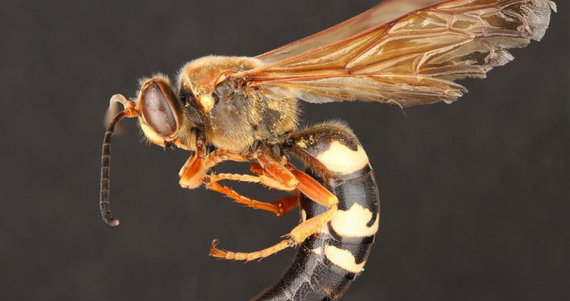 Eastern cicada killer. Photo by Alejandro Santillana
Eastern cicada killer. Photo by Alejandro Santillana
August 1, 2018
“Ant-Man and The Wasp,” sequel to Marvel Cinematic Universe’s 2015 “Ant-Man,” is in movie theaters this summer. Wondering how the superheroes compare to real insects, we checked in with the Academy’s Entomology Department, which houses 3.5 million insect specimens – a treasure for researchers around the world.
There we found Robert Conrow, an affable Drexel PhD student and teaching assistant who studies crane flies with Entomology Curator Jon Gelhaus, PhD, a world expert. Gelhaus also is a professor in Drexel’s Department of Biodiversity, Earth and Environmental Science. Conrow says crane flies would make terrible superheroes “because their long legs easily fall off in the slightest breeze.”
Conrow has some fascinating insight into real wasps and how they are portrayed in the movie. Spoiler Alert: If you plan to see the movie, stop reading now.
Thankfully there are plenty of intense super hero/insect crossovers in movies, including Spiderman, Blue Beetle, Black Widow, and now Ant-Man.
First off, the movie was great! It was a good sequel but could be watched as a single film. I won’t get into much detail about the accuracy of the movie because, well, if we came back for the sequel we are okay suspending disbelief enough already.
I’m willing to admit that Dr. Pym (the original Ant-Man played by Michael Douglas who first learns to control the ants) is a more skilled entomologist than me. I was happy that the Wasp (Evangiline Lilly) was female, as many Hymenopterans (the taxonomic order that contains ants, bees and wasps) have haplodiploidy. Haplodiploidy is a process by which only unfertilized eggs become males, which generally results in ratios of three females to every male.
My one major gripe was that the Wasp didn’t have an army of wasps at her disposal, which would have made the film much more enjoyable. When you really think about it, the Wasp could have them do different jobs: hornets to build for her, yellow-jackets as soldiers, parasitic wasps to, well, probably best not to imagine what a parasitic wasp the size of a small car would do; the Alien franchise covered that one pretty well.
They do touch on some insect-inspired traits in the film. The Wasp knocks Ant-Man (Paul Rudd) out at one point with what seems like a small dart or a sting. He wakes up later in a car, but many wasps’ prey would wake up to a much worse fate.
Many solitary wasps, such as Sphecius speciosus, the Cicada Killer wasp, will snatch a cicada and sting it, rendering it paralyzed. The cicada is then placed in the nest alive to become food for the wasp larvae. Yikes!
A large portion of the film deals with shrinking down so small that you “slip between the atoms,” and enter the quantum realm. I can’t speak at length about the physics in the film, but in the Academy Entomology Collection we do get familiar with small.
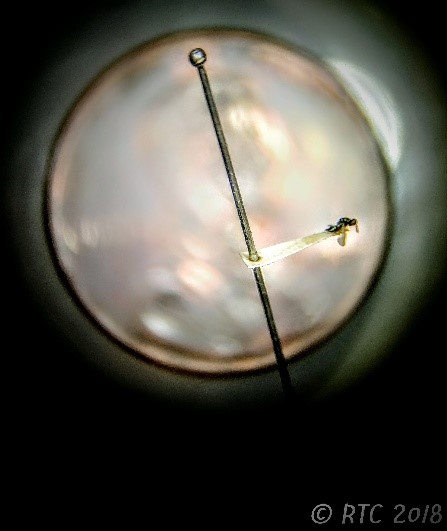 Entedon sp. wasp against a penny for size.
Entedon sp. wasp against a penny for size.
The Academy’s collection does not have a specimen of the smallest wasp in the world, Dicopomorpha echmepterygis, which measures 0.139 millimeters. (As a reference, the thickness of a dime is 1.35 millimeters. Other species are known to be smaller than a paramecium or amoeba!)
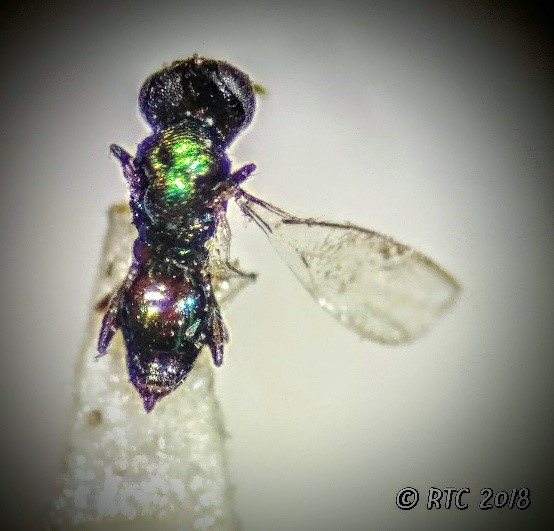 Overhead view of Entedon sp. Photos by Robert Conrow
Overhead view of Entedon sp. Photos by Robert Conrow
I was, however, able to find some very tiny wasps in our collection. The wasp pictured above from the genus Entedon measures 0.79 mm (the average size was closer to 1.0 mm) which means it fits inside Lincoln’s tie on a penny!
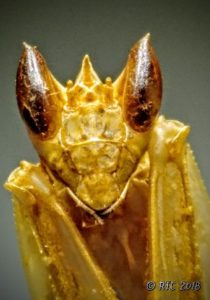 The face of the orchid mantis. Photo by Robert Conrow
The face of the orchid mantis. Photo by Robert Conrow
A new character, Ghost (Hannah John-Kamen), is introduced in this film, and her helmet definitely has an insect vibe to it. My first thought was a spider. Yes, it does have the spider feel to it, but ultimately I think this is insect inspired. Many insects have a small triangle of three eyes on their head, in addition to their two compound eyes.
These are called ocelli and are a simple eye-like organ that acts only as a light detector. These ocelli cannot form a complex image but are very useful in extending an insect’s field of vision.
The Ghost character wears a white battle suit which helps her go invisible and “phase shift” in and out of our dimension as well as move fast and stealthily in battle. All this together made me think of the orchid mantis, Hymenopus coronatus. This praying mantis is a beautiful bright white and a master of camouflage in their pursuit of prey.
 Side view of Hymenopus coronatus. Photo by Robert Conrow.
Side view of Hymenopus coronatus. Photo by Robert Conrow.
One last point, there is a great gag in the film about truth serum, and if it exists. We know about one such wasp species that uses mind control if not truth serum. Ampulex compressa the emerald cockroach wasp which uses cockroaches for food much like the cicada killer does with cicadas.
 Side view of the emerald cockroach wasp. Photos by Robert Conrow
Side view of the emerald cockroach wasp. Photos by Robert Conrow
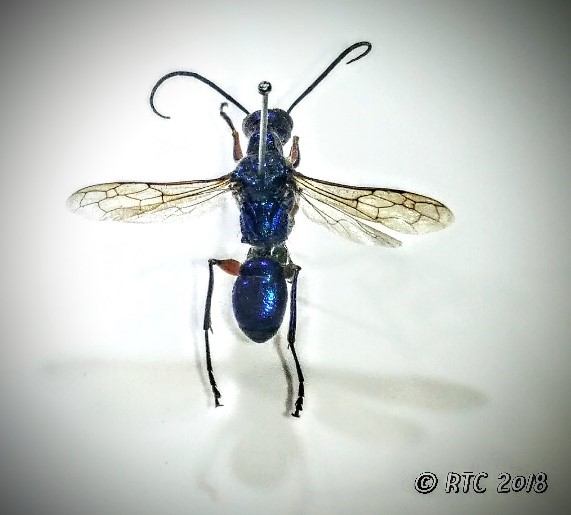 Overhead view of the emerald cockroach wasp.
Overhead view of the emerald cockroach wasp.
Unlike the cicada killer, this wasp stings directly into the cockroach’s brain. One sting into the hind brain paralyzes the cockroach, and a second into its head disables the escape reflex. The cockroach grooms itself and goes docile. The wasp cannot carry the cockroach so now under mind control the wasp walks it back to the nest to meet its fate with the wasp larvae!
I will end here with a similar message from the movie, where they discuss “evolving and adapting,” and that is exactly how we are left with mind-controlling wasps, which I realize doesn’t necessarily win evolution any brownie points, but it does make it amazing.